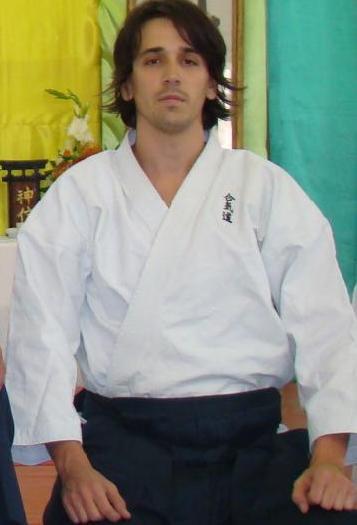Seiza
Seiza (Japanese: 正座, literally "proper sitting") is the traditional Japanese way of sitting on one's knees, a common posture in Zen meditation, martial arts, and traditional Japanese events. It involves sitting on the lower legs which are folded underneath the thighs, while the buttocks rest on the heels. This position is often used in various ceremonies, such as tea ceremonies (chado or sado) and in traditional arts, including Ikebana (flower arranging) and shodo (calligraphy).
Etymology
The term seiza is derived from two Japanese words: sei (正), meaning "correct" or "proper," and za (座), meaning "sitting." Thus, seiza translates to "proper sitting." This reflects the cultural emphasis on etiquette and formality in Japan, especially in traditional settings.
History
The practice of seiza has its roots in the Muromachi period (1336–1573), where it became the standard way of sitting in Japanese society. Before this period, various sitting styles were prevalent, including agura (cross-legged sitting) and tatehiza (one knee raised). The adoption of seiza was part of a broader cultural shift towards more formalized manners and etiquette during the Muromachi period.
Posture and Technique
To sit in seiza, one must first kneel on the floor, folding their legs underneath their thighs, with the feet flat on the floor and the big toes overlapping slightly. The buttocks then rest on the heels, and the back is kept straight. Hands are placed on the thighs with palms down, or in formal settings, folded in the lap. Maintaining this posture requires flexibility in the ankles, knees, and hips, and can be uncomfortable for beginners or those not accustomed to it.
Cultural Significance
Seiza is more than just a way of sitting; it embodies the Japanese cultural values of respect, humility, and discipline. It is a posture that is closely associated with the samurai class and the martial virtues of patience and endurance. In traditional arts and ceremonies, seiza is considered the proper way to sit, as it promotes a calm and focused state, conducive to meditation and mindful practice.
Health and Comfort
While seiza is a symbol of traditional Japanese culture, sitting in this position for extended periods can be challenging, especially for those not used to it. It can lead to discomfort or numbness in the legs due to reduced blood flow. To alleviate discomfort, special cushions called zabuton are often used, and there are also seiza benches designed to support the buttocks while keeping the legs folded underneath.
Modern Usage
Today, seiza remains an integral part of traditional Japanese ceremonies and practices. However, its use in everyday life has diminished, with Western-style chairs and seating becoming more common in Japanese homes and workplaces. Despite this, seiza continues to be taught and practiced, particularly in martial arts dojos and in schools where traditional Japanese arts are taught.
See Also
Transform your life with W8MD's budget GLP-1 injections from $125.
W8MD offers a medical weight loss program to lose weight in Philadelphia. Our physician-supervised medical weight loss provides:
- Most insurances accepted or discounted self-pay rates. We will obtain insurance prior authorizations if needed.
- Generic GLP1 weight loss injections from $125 for the starting dose.
- Also offer prescription weight loss medications including Phentermine, Qsymia, Diethylpropion, Contrave etc.
NYC weight loss doctor appointments
Start your NYC weight loss journey today at our NYC medical weight loss and Philadelphia medical weight loss clinics.
- Call 718-946-5500 to lose weight in NYC or for medical weight loss in Philadelphia 215-676-2334.
- Tags:NYC medical weight loss, Philadelphia lose weight Zepbound NYC, Budget GLP1 weight loss injections, Wegovy Philadelphia, Wegovy NYC, Philadelphia medical weight loss, Brookly weight loss and Wegovy NYC
|
WikiMD's Wellness Encyclopedia |
| Let Food Be Thy Medicine Medicine Thy Food - Hippocrates |
Medical Disclaimer: WikiMD is not a substitute for professional medical advice. The information on WikiMD is provided as an information resource only, may be incorrect, outdated or misleading, and is not to be used or relied on for any diagnostic or treatment purposes. Please consult your health care provider before making any healthcare decisions or for guidance about a specific medical condition. WikiMD expressly disclaims responsibility, and shall have no liability, for any damages, loss, injury, or liability whatsoever suffered as a result of your reliance on the information contained in this site. By visiting this site you agree to the foregoing terms and conditions, which may from time to time be changed or supplemented by WikiMD. If you do not agree to the foregoing terms and conditions, you should not enter or use this site. See full disclaimer.
Credits:Most images are courtesy of Wikimedia commons, and templates, categories Wikipedia, licensed under CC BY SA or similar.
Contributors: Prab R. Tumpati, MD

